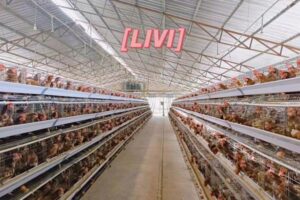Poultry farming has emerged as one of the most lucrative agribusinesses globally, driven by the rising demand for eggs and poultry meat. For those considering venturing into this industry, understanding the costs involved in setting up a fully automatic poultry farm for 20,000 layers is crucial. This article provides an in-depth analysis of the costs, factors influencing them, and the benefits of investing in automation.
The poultry industry is witnessing rapid growth, with layer farms playing a pivotal role in meeting the global demand for eggs. Establishing a fully automatic poultry farm for 20,000 layers can be a game-changer, offering efficiency and scalability. However, the initial investment can be substantial, and understanding the cost components is essential for making informed decisions.
1. Land Acquisition (₦15 million – ₦30 million ≈ $10,000 – $20,000)
In rural outskirts of Abuja (e.g., Kuje, Gwagwalada, or Kwali), 2 acres of farmland suitable for poultry use may cost:
-
Lease (3–5 years): ₦1.5M – ₦3M
-
Purchase: ₦15M – ₦30M ($10,000 – $20,000)
2. Poultry House Construction & Infrastructure ($20,000 – $40,000)
This includes:
-
Battery cage housing (or deep litter)
-
Feed storage, egg collection room, drainage
-
Perimeter fencing, small admin block
Estimated at $1 – $2 per bird.
Imported or locally fabricated automated systems:
-
Automatic feeders and drinkers
-
Layer cages (hot galvanized, 3–4 tier)
-
Environmental controls (fans, lighting, ventilation)
-
Egg conveyor or manual collection system
Fully automated options may exceed $50,000.

4. First Batch of Birds, Feed & Vaccines ($40,000 – $55,000)
-
Point-of-lay pullets: $1.20 – $1.50 each = ~$24,000 – $30,000
-
Starter feed, vaccines, medications: $16,000 – $25,000
Covers 3–4 months of production setup.
5. Power and Water Setup ($8,000 – $15,000)
Due to unreliable grid electricity in Abuja’s outskirts, farms require:
-
15–30 kVA diesel generator: $5,000 – $8,000
-
Borehole drilling, water tank, plumbing: $3,000 – $7,000
Solar solutions may reduce long-term costs but increase upfront investment.
Investing in a fully automatic poultry farm offers several advantages:
-
Efficiency: Automation reduces labor costs and increases operational efficiency. Automated systems handle feeding, egg collection, and environmental control, allowing farm managers to focus on strategic tasks.
-
Productivity: With optimal living conditions and consistent feeding schedules, layer productivity improves, leading to higher egg production.
-
Scalability: Automated farms are easier to scale, allowing for the expansion of operations without a proportional increase in labor.
-
Quality Control: Automation ensures consistency in operations, leading to better quality eggs and healthier birds.
Setting up a fully automatic poultry farm for 20,000 layers involves a significant initial investment, but the long-term benefits outweigh the costs. By understanding the cost components and leveraging automation, poultry farmers can achieve higher efficiency, productivity, and profitability.
If you’re considering venturing into poultry farming, consulting with industry experts and conducting thorough research is crucial. This will help tailor the farm setup to your specific needs and local market conditions. For more insights and detailed guidance, explore our related articles or reach out to our team of experts.
Are you ready to take the plunge into poultry farming? Contact us today for personalized advice and a detailed plan to set up your fully automatic poultry farm.




